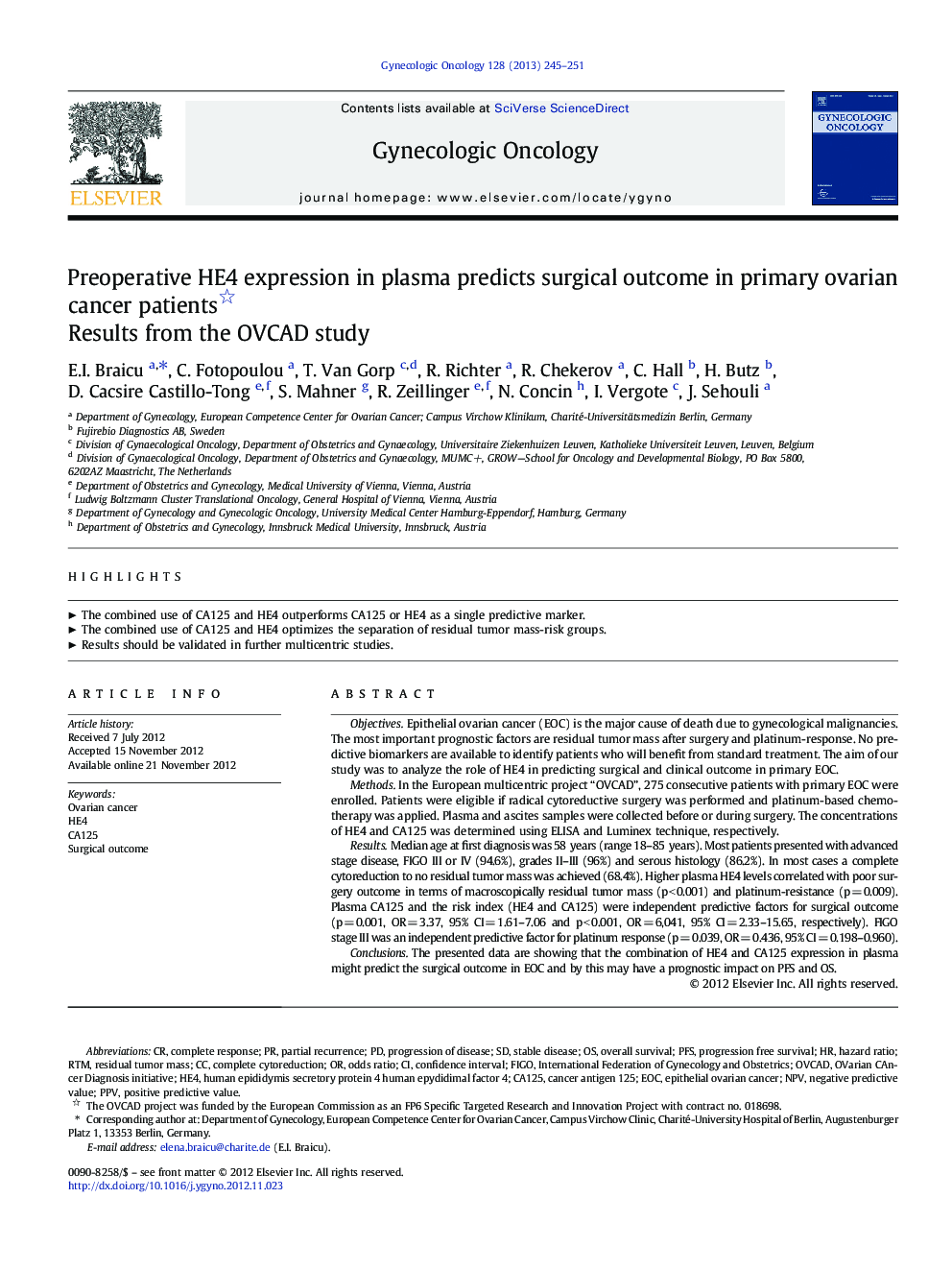| Article ID | Journal | Published Year | Pages | File Type |
|---|---|---|---|---|
| 3943711 | Gynecologic Oncology | 2013 | 7 Pages |
ObjectivesEpithelial ovarian cancer (EOC) is the major cause of death due to gynecological malignancies. The most important prognostic factors are residual tumor mass after surgery and platinum-response. No predictive biomarkers are available to identify patients who will benefit from standard treatment. The aim of our study was to analyze the role of HE4 in predicting surgical and clinical outcome in primary EOC.MethodsIn the European multicentric project “OVCAD”, 275 consecutive patients with primary EOC were enrolled. Patients were eligible if radical cytoreductive surgery was performed and platinum-based chemotherapy was applied. Plasma and ascites samples were collected before or during surgery. The concentrations of HE4 and CA125 was determined using ELISA and Luminex technique, respectively.ResultsMedian age at first diagnosis was 58 years (range 18–85 years). Most patients presented with advanced stage disease, FIGO III or IV (94.6%), grades II–III (96%) and serous histology (86.2%). In most cases a complete cytoreduction to no residual tumor mass was achieved (68.4%). Higher plasma HE4 levels correlated with poor surgery outcome in terms of macroscopically residual tumor mass (p < 0.001) and platinum-resistance (p = 0.009). Plasma CA125 and the risk index (HE4 and CA125) were independent predictive factors for surgical outcome (p = 0.001, OR = 3.37, 95% CI = 1.61–7.06 and p < 0.001, OR = 6,041, 95% CI = 2.33–15.65, respectively). FIGO stage III was an independent predictive factor for platinum response (p = 0.039, OR = 0.436, 95% CI = 0.198–0.960).ConclusionsThe presented data are showing that the combination of HE4 and CA125 expression in plasma might predict the surgical outcome in EOC and by this may have a prognostic impact on PFS and OS.
► The combined use of CA125 and HE4 outperforms CA125 or HE4 as a single predictive marker. ► The combined use of CA125 and HE4 optimizes the separation of residual tumor mass-risk groups. ► Results should be validated in further multicentric studies.
